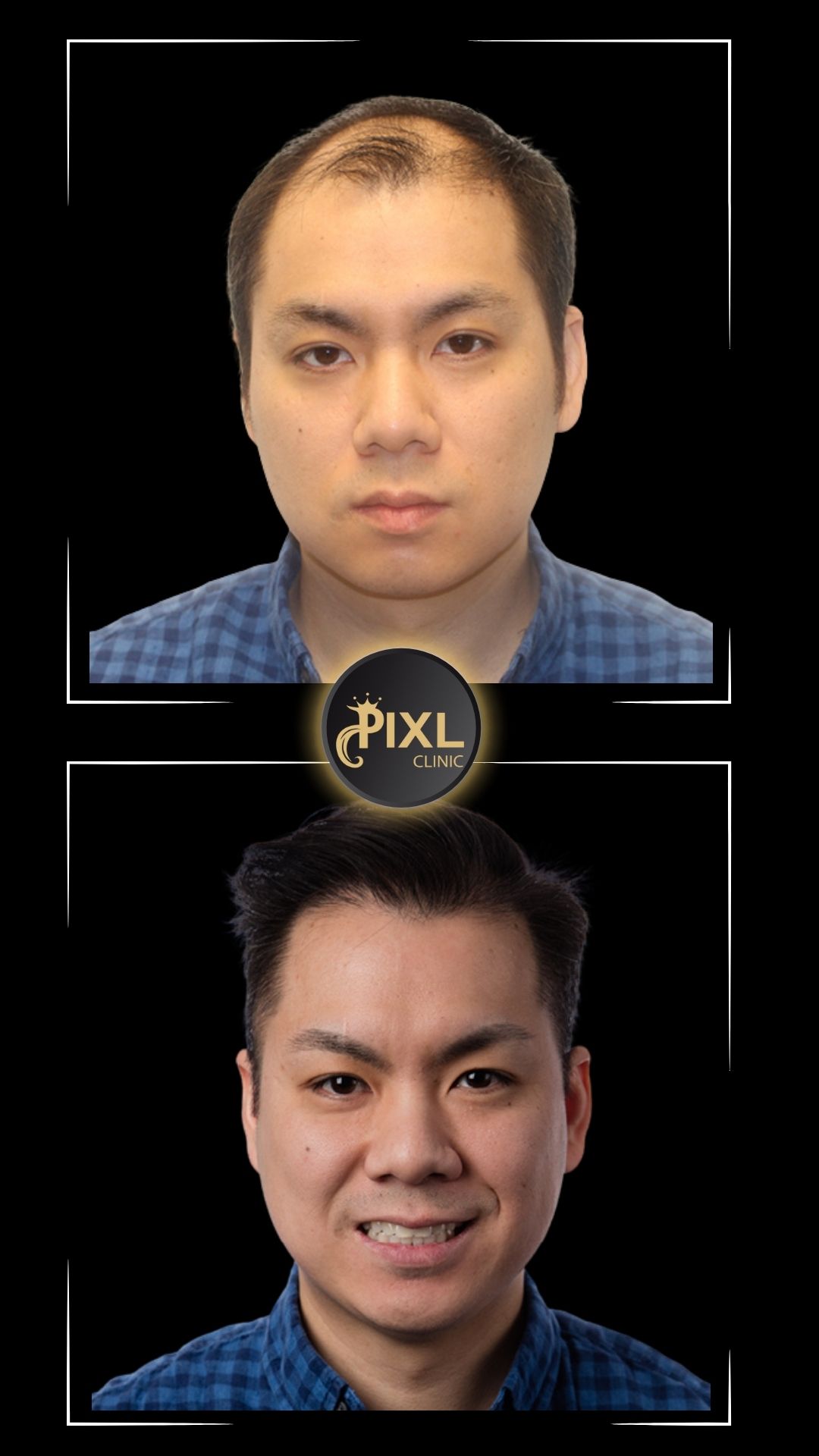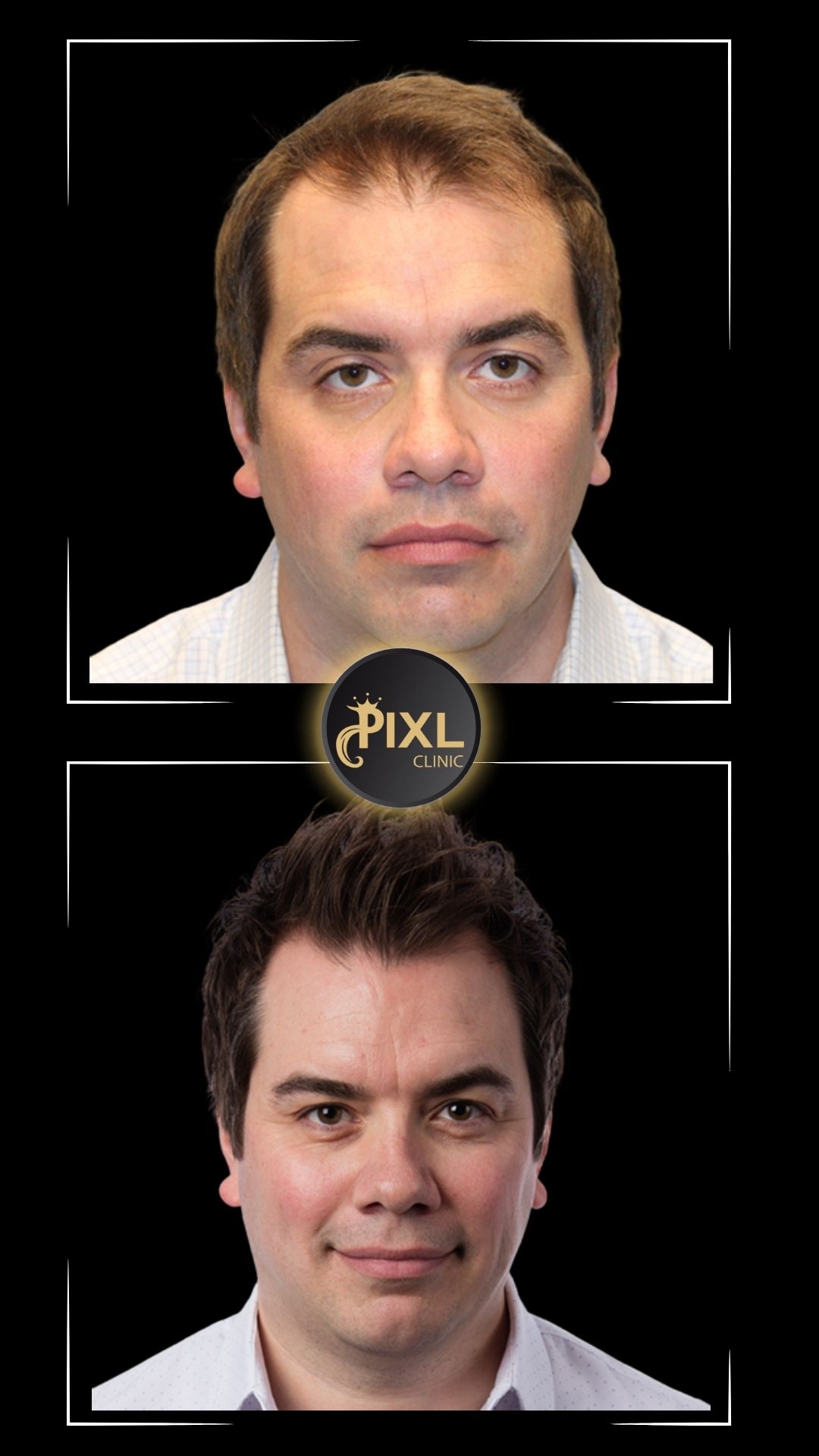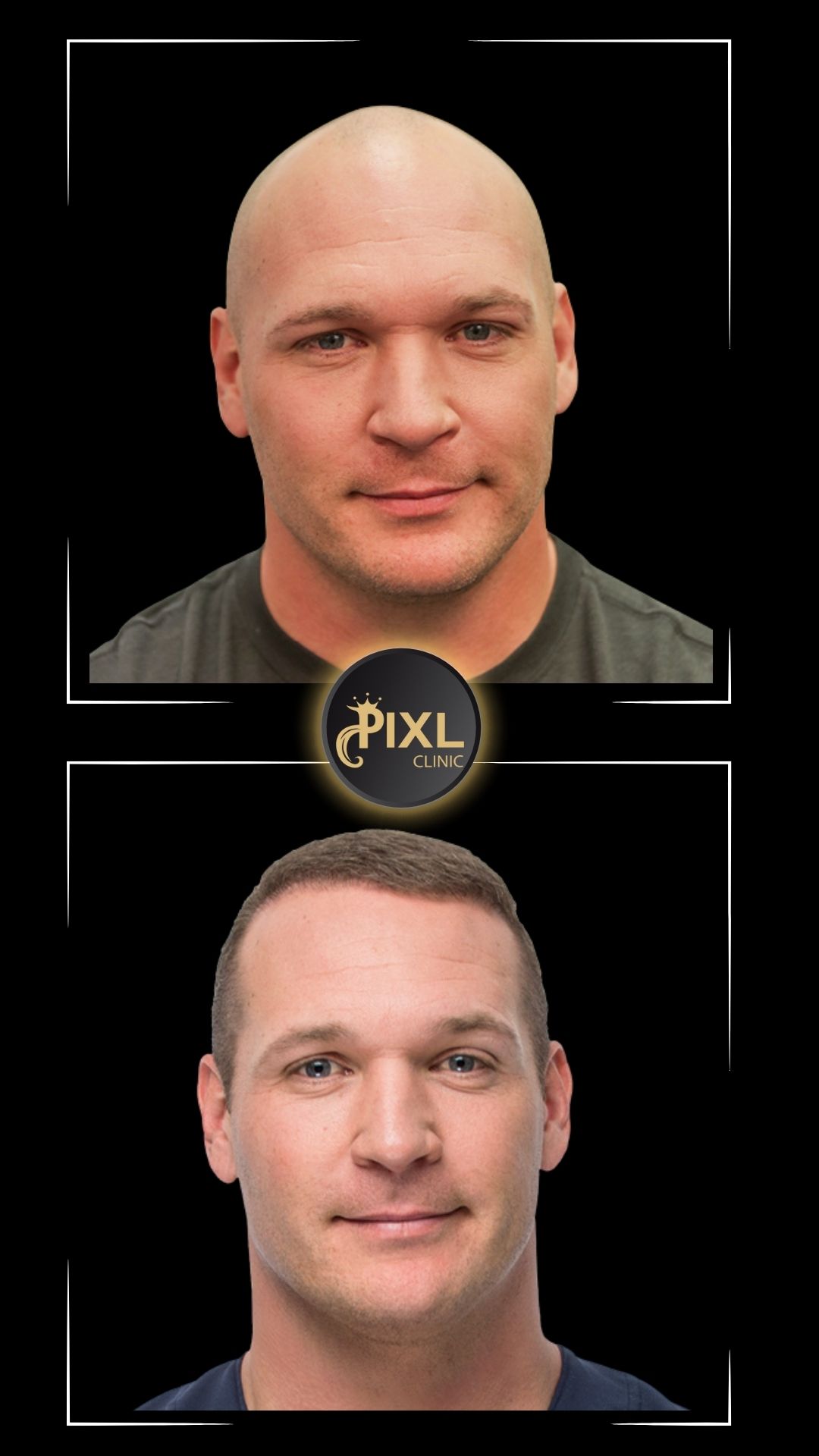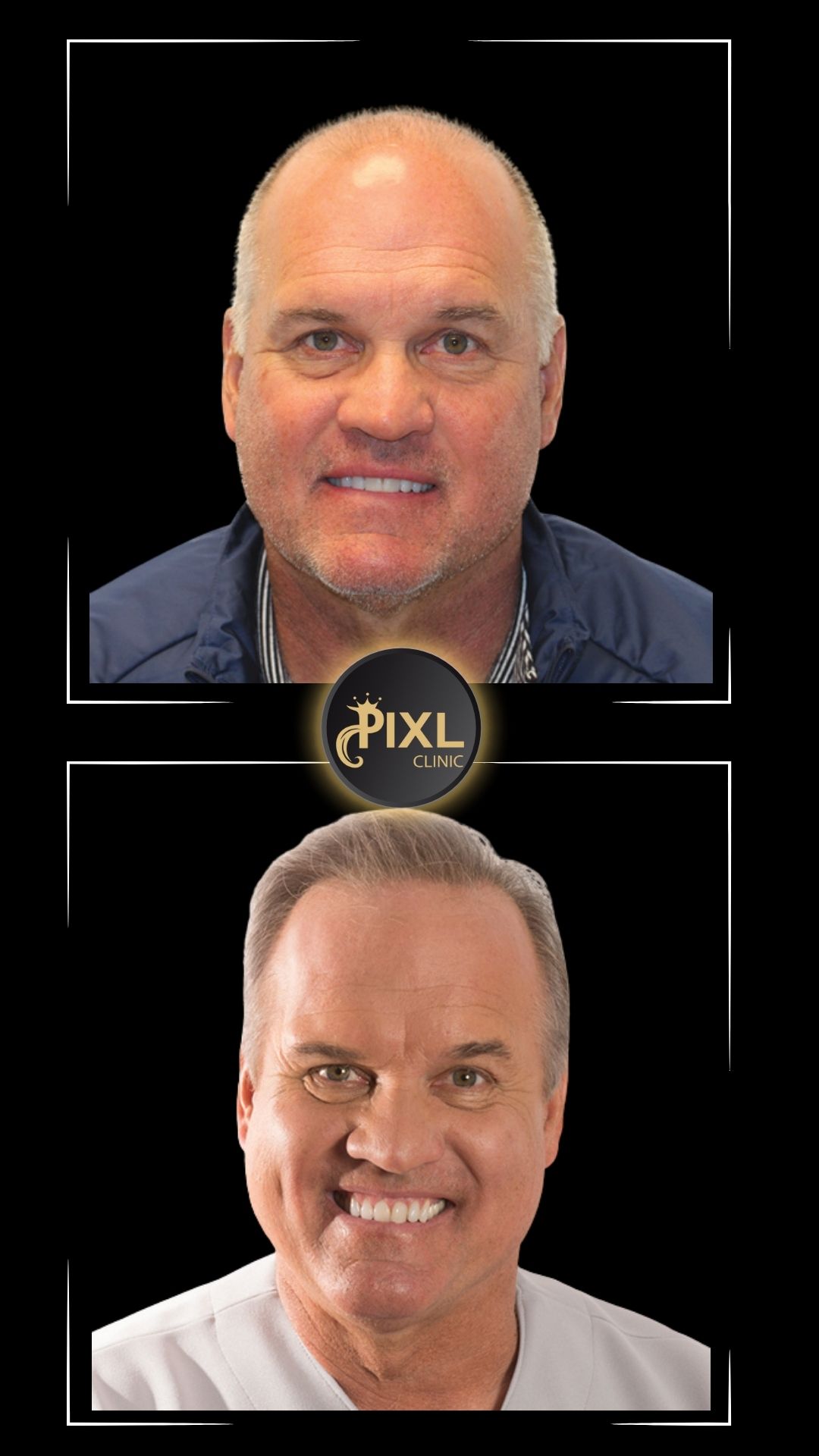Hair Transplant for Norwood Scale 3: Addressing Early Hair Loss with Confidence
Hair loss is a common concern for many men, and Norwood Scale 3 marks the point where it becomes visibly noticeable. Characterized by a deeper receding hairline and thinning at the temples, this stage often prompts individuals to explore hair restoration options. A hair transplant at this stage can effectively restore your hairline and boost confidence. Here’s a comprehensive guide to understanding and managing a hair transplant for Norwood Scale 3.
What is Norwood Scale 3?
The Norwood Scale is a system used to classify the stages of male pattern baldness. Norwood Scale 3 represents:
- A visibly receding hairline, particularly at the temples.
- Some thinning at the frontal hairline.
- Minimal or no crown thinning (crown thinning occurs in Norwood 3 Vertex).
While this stage reflects moderate hair loss, it provides a great opportunity for intervention with hair restoration techniques like a transplant.
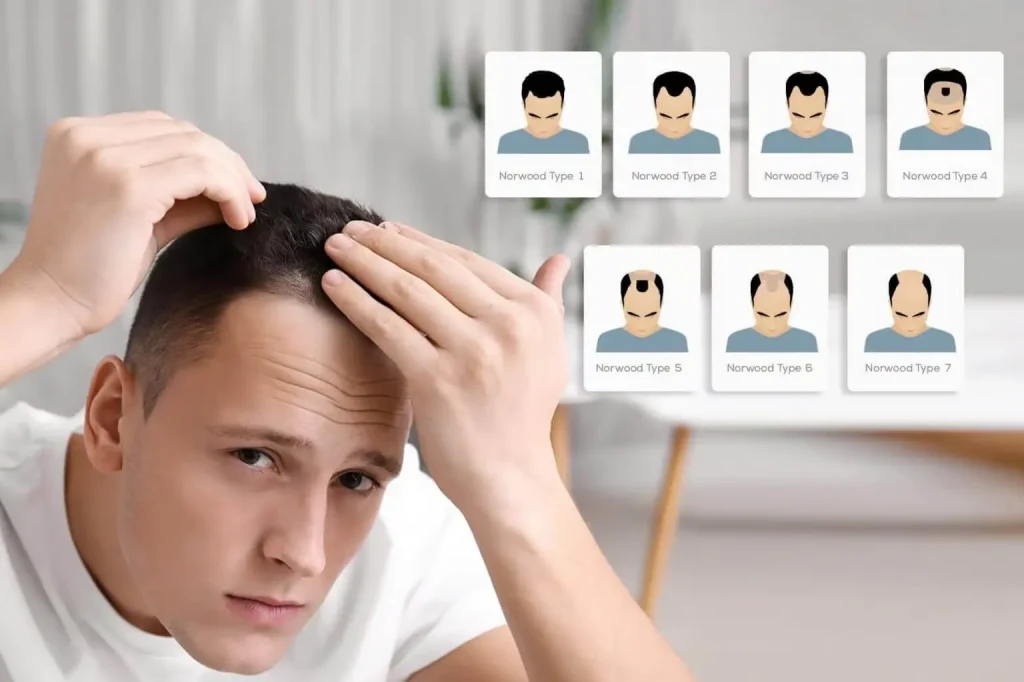
Is a Hair Transplant Necessary at Norwood Scale 3?
Not everyone at Norwood Scale 3 requires a hair transplant. Factors that might influence your decision include:
- Progression of Hair Loss: If hair loss is actively progressing, non-surgical treatments like minoxidil or finasteride might be tried first.
- Desired Hairline Restoration: A transplant is ideal for reshaping and restoring a youthful hairline.
- Psychological Impact: If hair loss affects your confidence and self-esteem, a hair transplant could be a life-changing solution.
Techniques for Norwood Scale 3 Hair Transplants
FUE (Follicular Unit Extraction):
- Individual hair follicles are extracted from the donor area and transplanted to the thinning areas.
- Minimally invasive and leaves no linear scar.
- Best suited for smaller graft requirements (e.g., 1,500–2,500 grafts).
FUT (Follicular Unit Transplantation):
- A strip of skin is removed from the donor area, and follicles are harvested from it.
- Allows for a higher number of grafts in a single session, but leaves a linear scar.
- May be considered if more grafts are needed for dense coverage.
DHI (Direct Hair Implantation):
- A variation of FUE where follicles are implanted directly into the scalp using a specialized tool.
- Offers precision and natural results.
How Many Grafts Are Needed for Norwood Scale 3?
A typical Norwood Scale 3 case requires 1,500–2,500 grafts, depending on:
- The extent of temple and hairline recession.
- Desired density and hairline design.
- Individual scalp characteristics and donor hair quality.
The Hair Transplant Process
Consultation:
- A hair restoration specialist assesses your hair loss pattern, scalp health, and donor hair availability.
- A personalized hairline design is created to complement your facial structure.
Surgery Day:
- Local anesthesia ensures a pain-free procedure.
- Grafts are harvested from the donor area (back or sides of the scalp) and transplanted to the receding hairline or temples.
- The procedure typically takes 4–8 hours, depending on the number of grafts.
Recovery:
- Redness, swelling, and scabbing at the transplant site are common but subside within 1–2 weeks.
- Transplanted hair enters the “shedding phase” (shock loss) within 2–8 weeks, followed by regrowth starting at 3–6 months.
Results:
- Noticeable improvement is visible by 6–9 months.
- Full results, with thick and natural-looking hair, are achieved within 12–18 months.
Benefits of Getting a Hair Transplant at Norwood Scale 3
Early Intervention:
- Restoring your hairline at this stage prevents hair loss from becoming more severe.
Natural Results:
- With fewer grafts required, it’s easier to achieve a natural and undetectable appearance.
Higher Success Rate:
- Ample donor hair availability ensures better coverage and density.
Boosted Confidence:
- A youthful and restored hairline improves your overall appearance and self-esteem.
Potential Challenges
Future Hair Loss Progression:
- Hair loss may continue after the transplant, so it’s important to discuss preventative treatments with your surgeon (e.g., minoxidil or finasteride).
Realistic Expectations:
- A hair transplant restores existing bald spots but doesn’t prevent future hair thinning.
Cost of a Hair Transplant for Norwood Scale 3
The cost varies depending on factors like the clinic, surgeon expertise, and the number of grafts required. On average:
- 1,500–2,500 grafts: $4,000–$10,000.
Alternatives to Hair Transplants
Before committing to a transplant, consider these non-surgical options:
- Minoxidil: A topical solution to stimulate hair growth and slow hair loss.
- Finasteride: A prescription medication that blocks DHT (the hormone responsible for hair loss).
- PRP Therapy (Platelet-Rich Plasma): Injections of your own plasma to promote hair growth and thickness.
A hair transplant for Norwood Scale 3 is an excellent solution for men looking to restore their receding hairline and boost their confidence. With advanced techniques like FUE and DHI, natural-looking results are achievable, even with a relatively small number of grafts. If you’re considering a hair transplant, consult a qualified specialist to determine the best plan for your needs and ensure long-term satisfaction.
Embrace your hair restoration journey early and enjoy the benefits of a youthful, rejuvenated appearance!
FAQ: Hair Transplant for Norwood Scale 3
What is Norwood Scale 3?
Norwood Scale 3 is an early stage of male pattern baldness characterized by:
- A noticeable receding hairline, especially at the temples.
- Minimal or no crown thinning (unless it’s Norwood 3 Vertex, which includes crown thinning).
Can a hair transplant work for Norwood Scale 3?
Yes, a hair transplant is highly effective for Norwood Scale 3. It restores the receding hairline and temples, creating a youthful and natural appearance.
How many grafts are needed for Norwood Scale 3?
Typically, 1,500–2,500 grafts are required to restore the hairline and temple areas, depending on the extent of hair loss and desired density.
What techniques are used for Norwood Scale 3 transplants?
- FUE (Follicular Unit Extraction): Ideal for smaller graft requirements with minimal scarring.
- FUT (Follicular Unit Transplantation): Useful for harvesting more grafts if needed, but leaves a linear scar.
- DHI (Direct Hair Implantation): Offers precision and a natural look with minimal downtime.
Is a hair transplant necessary at this stage?
It depends on individual preference. Some men opt for a transplant to address their hairline early, while others wait until hair loss progresses further. Non-surgical treatments like minoxidil or finasteride can be tried first.
How long does the procedure take?
A hair transplant for Norwood Scale 3 typically takes 4–8 hours, depending on the number of grafts.
Does a hair transplant hurt?
No, the procedure is performed under local anesthesia, ensuring a pain-free experience. Some mild discomfort may occur during recovery.
What is the recovery time for a hair transplant?
- 1–2 days: Resume light activities.
- 1 week: Redness and scabbing subside.
- 2–3 weeks: Transplanted hair enters the shedding phase (normal).
- 3–6 months: New hair growth begins.
- 12–18 months: Final results are visible.
What are the benefits of a hair transplant at Norwood Scale 3?
- Restores a natural hairline.
- Prevents the appearance of further balding.
- Boosts confidence and self-esteem.
- Requires fewer grafts compared to advanced hair loss stages.
How much does a hair transplant cost for Norwood Scale 3?
The cost typically ranges from $2,000–$4,000, depending on the technique, number of grafts, and clinic location.
Will my hair continue to thin after a transplant?
Yes, untreated natural hair may continue to thin. Medications like minoxidil or finasteride can help prevent future hair loss and protect the results.
How long do the results last?
Hair transplants are permanent as the transplanted follicles are resistant to DHT, the hormone responsible for hair loss. However, ongoing hair thinning in untreated areas may require additional treatment or a second transplant.
What does the recovery process look like?
- Minor swelling and redness for a few days.
- Scabs form around grafts but fall off within 7–10 days.
- Transplanted hair sheds after 2–8 weeks (shock loss), followed by new growth.
Can I return to work after a transplant?
Yes, most patients return to work within 2–5 days, depending on the nature of their job and comfort level.
What medications are recommended post-transplant?
- Minoxidil: To promote hair growth and reduce future thinning.
- Finasteride: To block DHT and prevent further hair loss.
- Antibiotics/Anti-inflammatories: To prevent infection and reduce swelling.
Are there non-surgical alternatives to a transplant?
Yes, alternatives include:
- Minoxidil: Topical treatment to stimulate hair growth.
- Finasteride: Oral medication to slow hair loss.
- PRP (Platelet-Rich Plasma): Injections to promote hair growth.
- Scalp Micropigmentation (SMP): Cosmetic tattooing to create the illusion of fuller hair.
How do I know if I’m a good candidate for a hair transplant?
You’re a good candidate if you:
- Have stable hair loss.
- Have sufficient donor hair available.
- Are in good overall health.
- Have realistic expectations.
How do I choose a clinic for my hair transplant?
- Look for an experienced and board-certified surgeon.
- Review before-and-after photos of similar cases.
- Check clinic reviews and patient testimonials.
Can a hair transplant look natural for Norwood Scale 3?
Yes, with advanced techniques like FUE and DHI, hair transplants can produce natural results, especially at an early stage like Norwood 3.
What if my hair loss progresses after a transplant?
If hair loss continues, additional treatments like minoxidil, finasteride, or a second transplant can help maintain the overall appearance. Consult with your surgeon for a long-term plan.
If you’re considering a hair transplant, consult with a reputable specialist to create a personalized treatment plan that suits your hair restoration goals!


